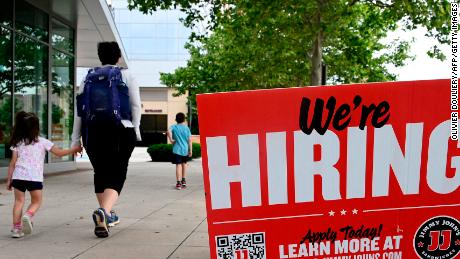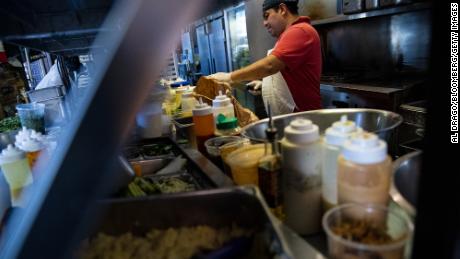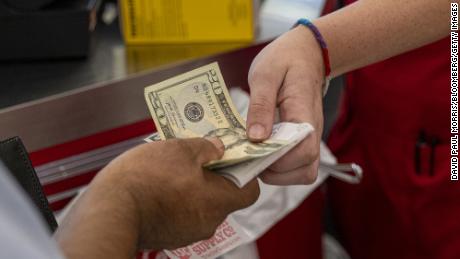US employers announced just 20,485 layoffs in August, the lowest year-to-date total since 1993, according to data released Thursday from outplacement firm Challenger, Gray & Christmas.
A separate report from the Labor Department revealed that initial jobless claims for the week ended August 27 fell to 232,000, a drop of 5,000 from the previous week’s level, which was revised downward by 6,000 claims. Initial claims are now at their lowest level in two months.
Recent employment data, including the July jobs report and labor turnover survey have also defied analysts’ and economists’ expectations that the labor market would cool down after it neared its recovery from the pandemic and as the Federal Reserve took extreme measures to tame inflation and squelch demand.
“The labor market isn’t just running hot, it’s like a burning inferno,” said Megan Greene, global chief economist for the Kroll Institute and a senior fellow at Brown University.
The hot job market complicates matters even further for the Federal Reserve, which views the current ratio of two job openings for every job seeker as a potential driver of higher wages that, in turn, can lead to higher prices and keep inflation elevated. Friday’s federal jobs report will be closely watched for signs that employment growth is slowing.
Economists estimate that about 300,000 jobs will be added in August, a considerable drop from July and the lowest monthly gain since April 2021. The August jobs report is due out Friday morning.
Layoffs looming
The bulk of those announcements have come from technology and tech-adjacent companies that scaled up their workforces to handle the sudden demand for their services during the pandemic.
“Things are cooling off again, and so those industries are going to have to [scale back] on the hiring that they did,” he said.
As the pandemic eases, other industries are seeing more demand. People have returned to vacationing, eating at restaurants and spending in other service areas that they couldn’t access as easily during much of 2020 and 2021. That shift has led to weakness for some businesses, said Gus Faucher, senior vice president and chief economist with The PNC Financial Services Group. “That being said, demand is still strong in the economy; many businesses are still short-staffed. So for workers who are laid off, it’s fairly easy for them to find new jobs.”
But firms still need workers
“What they’re more likely to do is, should a position come open, they’re going to be slower to fill that position in anticipation for what may come,” he said.
There are some systemic challenges to closing the labor shortage gap. The size of the labor force is slightly below its pre-pandemic level, and the labor force participation rate has been on a decline since the early 2000s, when it was around 67%, and dropping to just above 62% in July. Economists had expected that percentage to grow as the economy added back jobs; however, it has actually fallen this year.
“Those 4 or 5 percentage points represent a couple million people that we would really be needing,” said Hetrick.
Economists continue to chew on who these missing workers are and what is keeping them out of the workplace, including lack of child care, health-related concerns, potentially restrictive immigration policies, and early retirements that fast-forwarded a demographic movement that has been decades in the making.
Despite broader economic uncertainty, the scales remain heavily tipped toward the worker, said Bonnie Dowling, an associate partner at business consultancy firm McKinsey.
Dowling was a co-author on a recent McKinsey report that sought to address the stark shortage in workers and what may be keeping younger employees on the sideline.
Aspects such as workplace flexibility, meaningful work and compensation were cited as some of the key wants, according to the report.
“We have to fundamentally rethink how we’re working,” she added.



Leave a Reply